

NEW JERSEY
Delaware River

1 of 1


NEW JERSEY
Delaware River


1 of 1
New Jersey is home to relatively few species of turtle (thirteen, not including the occasional sea turtle), several of
which have been introduced, including Red-eared Sliders (Trachemys scripta elegans) and Eastern Spiny Softshells
(Apalone spinifera spinifera).
Another non-native is the Common Map Turtle (Graptemys geographica). The NJ population is very small and
isolated, living only along a short stretch of the Delaware River.
Adult females grow much larger than males (see comparison on the rock below: that’s a male in front of three
females). Perhaps owing to the disparity in size, they also seem to have different basking preferences. The bold
females rest almost exclusively on exposed boulders in open water, while the more cautious males often hug the river’s
edge, basking on logs close to vegetation.
Another distinguishing characteristic of females is their oversized head, with its thick neck and massive jaws,
built for crushing the shells of crayfish, mussels, and other mollusks. The more slender and less powerful males make
do with softer prey, such as aquatic insects, snails, and smaller crustaceans.
Map Turtles get their name from the ornate markings on their shells, which resemble the contour lines of
cartography. Although the pattern often fades or wears out on adults, this female (left) still shows distinct markings,
as does the underside of this male (right).
My Philadelphia herping buddy, Billy, is an irrepressible explorer (for starters, read my PA 2008 and 2009
reports). For him, being out in habitat is an immersion experience, or in this case, submersion. If turtles are in the
water, so is Billy.
On a late summer day (joined by my daughter, Shoshi, and Billy’s wife, Jen) we meet at the Delaware to get a
close-up look at Map Turtles. The idea is to wade in the water and approach rocks covered with basking turtles. They
invariably dive as soon as they see you; however, unlike Painteds
―
which usually swim away and keep going
―
Maps head straight for the bottom and hunker down in one place. That’s when the mine sweeping begins.
Using a mask and snorkel, the theory is to walk along or drift with the current, face down in the river, scanning
for dark “rocks” on the muddy bottom. If you’re lucky and in the right place, you’ll notice one that looks a little
different, and since the turtles don’t spook so easily when underwater, it’s possible to reach down and get one in hand.
Billy floats downstream and demonstrates his technique (it’s sort of like watching a loon at work; the comparison
is apt, both figuratively and literally), and then, success!
―
he snags one of each sex for us to take close-ups.
We try to photograph this female without holding her, but she won’t cooperate. Lke most turtles, she pulls back
into her shell, so we wait for her to extend a leg, her head, anything to look more natural. Finally, she strikes the
perfect pose, but there’s no pausing for pictures, just a sudden launch into the water.
In the end, it’s so much easier in hand, on land. At least Shoshi looks natural.
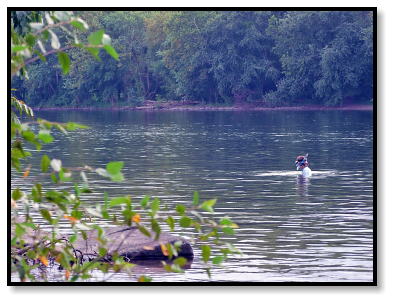
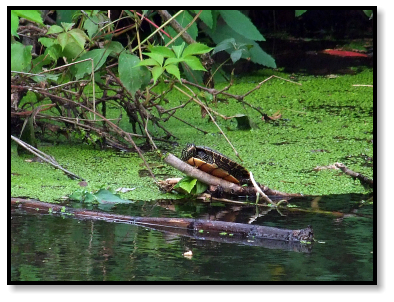
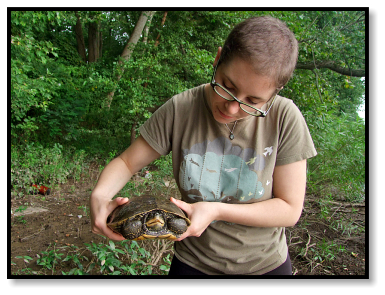
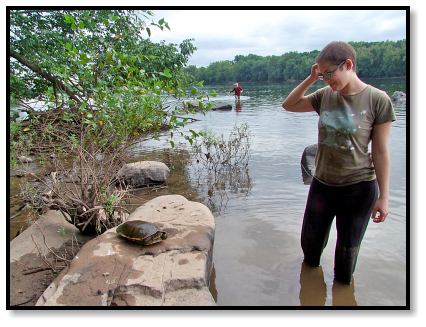
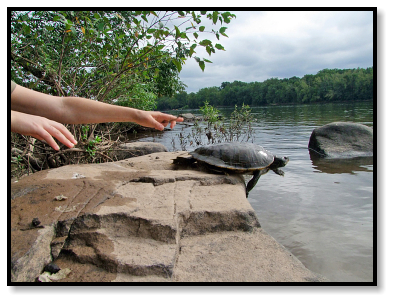
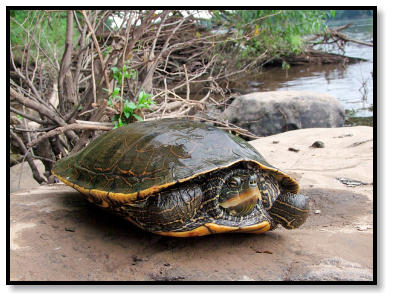
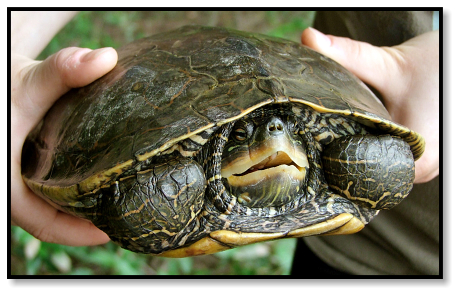
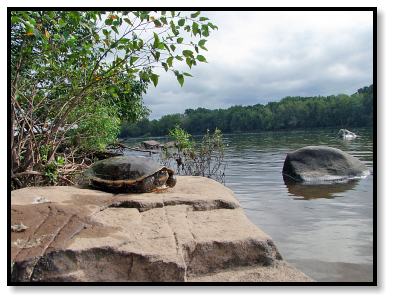
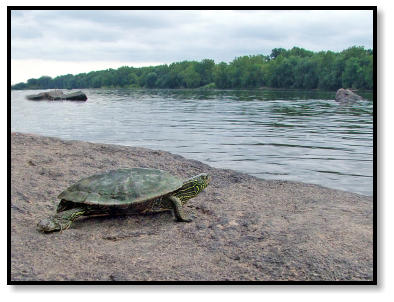
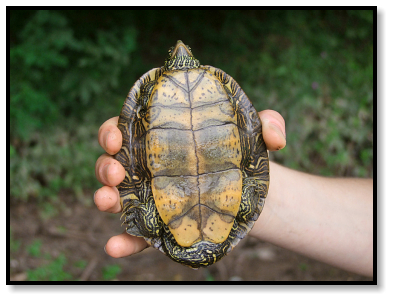
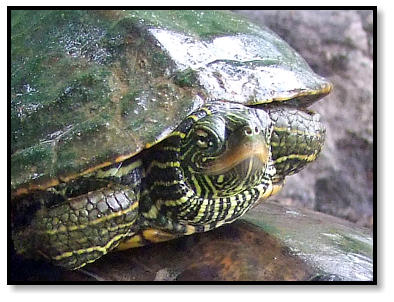
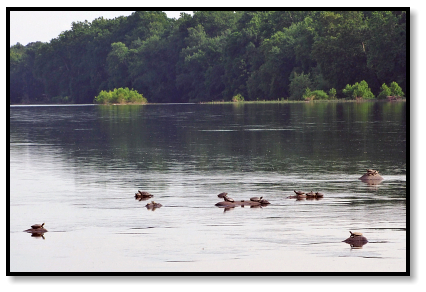
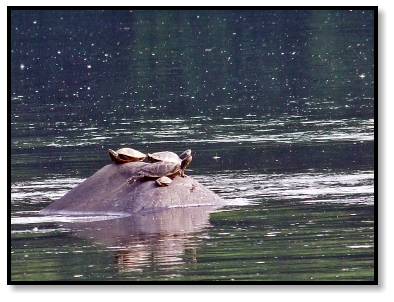
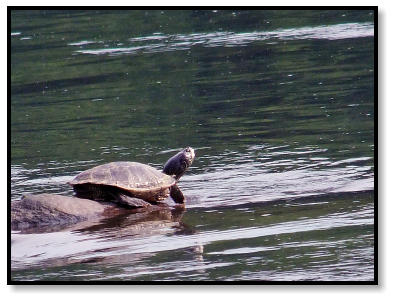
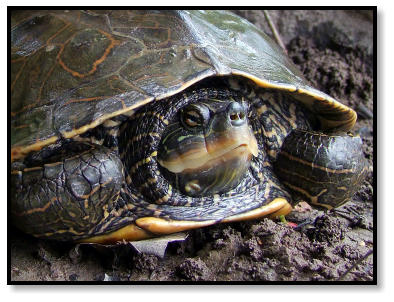
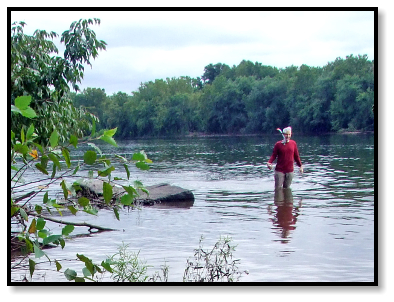
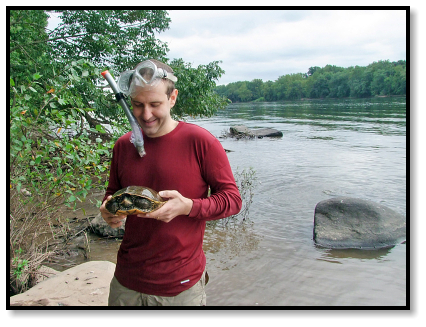
Female
Male







